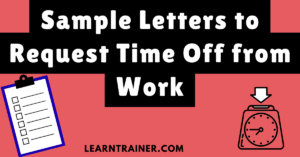Adverb clauses may not be the most glamorous topic in the world of grammar, but they play a vital role in the structure and flow of our sentences.
If you’ve ever wondered how to make your writing more dynamic or how to refine your language skills, understanding adverb clauses can do wonders for you.
In this post, we’ll dive deep into adverb clauses, their functions, and how you can use them effectively.
Why Should You Care About Adverb Clauses?
Have you ever felt like your writing or speech is a bit too dry or repetitive? Maybe you’re using the same words or phrases to describe actions or situations over and over again.
Adverb clauses can help with that. By introducing variety and providing more context or nuance to actions, you can make your sentences more engaging and informative.
Adverb clauses aren’t just about adding words they’re about adding meaning and precision.
In this post, I’ll explain what adverb clauses are, how to identify them, and most importantly, how to use them effectively.
By the end, you’ll have a solid understanding of these grammatical structures, complete with examples, explanations, and step-by-step instructions on how to make the most of them.
What Is an Adverb Clause?
An adverb clause is a group of words that functions like an adverb in a sentence. In other words, it modifies a verb, adjective, or another adverb, and it typically provides additional information about time, place, condition, cause, or manner.
This clause, just like a regular adverb, helps to answer questions such as when?,where?, why?, or how?.
For example, take this sentence:
- “I went to the store because I needed some milk.”
Here, the adverb clause “because I needed some milk” explains why I went to the store, giving the sentence more detail than if it were just a simple statement.
Key Features of an Adverb Clause
- It contains a subject and a verb: Like any clause, an adverb clause has its own subject and verb.
- It’s dependent: An adverb clause cannot stand alone as a sentence. It needs an independent clause to form a complete thought. This is what makes it different from an adverb (which can stand alone).
- Introduced by subordinating conjunctions: These conjunctions link the adverb clause to the main clause. Common examples include words like “because,” “although,” “if,” “when,” “while,” and “since.”
Now that you know what an adverb clause is, let’s take a look at 18 examples to help you understand how they work in different contexts.
18 Examples of Adverb Clauses
1. Time Adverb Clauses
Time adverb clauses answer the question “when?” and often begin with subordinating conjunctions such as when, before, after, while, and as soon as.
- When the sun rises, the birds start singing.
- This adverb clause specifies the time when the birds start singing—right after the sun rises.
- Before I leave for the office, I like to have a cup of coffee.
- The adverb clause “before I leave for the office” provides the time frame during which the action of drinking coffee happens.
- After the movie ends, we can grab some dinner.
- The action of grabbing dinner happens after the movie has finished, which is defined by the adverb clause.
- While I was sleeping, my phone rang.
- This tells us that the action of the phone ringing took place during the time the person was sleeping.
- As soon as he finishes his homework, he can go outside.
- The adverb clause shows that the action of going outside will happen immediately after finishing homework.
2. Place Adverb Clauses
Place adverb clauses answer the question “where?” and typically begin with conjunctions like where or wherever.
- Where the river meets the ocean, there is a small village.
- The adverb clause tells us where the small village is located—where the river meets the ocean.
- Wherever she goes, her dog follows her.
- The adverb clause specifies the place where the dog follows her: no matter where she goes.
- Where the road curves, you will find a lovely park.
- The adverb clause explains the specific place where the park is located, right at the curve of the road.
- Wherever I put my keys, I can never find them.
- This shows that no matter the place where the keys are placed, they’re always hard to find.
- Where the garden is planted, the soil is fertile.
- The adverb clause specifies the location where the soil is fertile—where the garden is planted.
3. Cause or Reason Adverb Clauses
Cause or reason adverb clauses answer the question “why?” and usually begin with subordinating conjunctions like because, since, as, and for.
- Because she studied hard, she passed the test with flying colors.
- The adverb clause explains the reason she passed the test—because she studied hard.
- Since the weather was bad, the picnic was postponed.
- The adverb clause provides the reason the picnic was postponed—due to the bad weather.
- As I was running late, I decided to skip breakfast.
- The adverb clause explains why the decision to skip breakfast was made—because the speaker was running late.
- For I did not know anyone at the party, I felt awkward.
- The adverb clause gives the reason for feeling awkward—it’s because the speaker did not know anyone at the party.
- Because of the traffic jam, we missed the flight.
- This clause gives the cause of missing the flight—because there was a traffic jam.
4. Condition Adverb Clauses
Condition adverb clauses explain “under what condition” something will happen and are introduced by conjunctions like if, unless, and provided that.
- If you finish your homework early, we can go out for ice cream.
- The adverb clause sets the condition that the homework must be finished early for the ice cream outing to happen.
- Unless you hurry, we will miss the bus.
- This adverb clause explains the condition that must be met to avoid missing the bus—you need to hurry.
- Provided that the weather stays nice, we’ll have the barbecue outside.
- The adverb clause sets the condition for having the barbecue outdoors—the weather must stay nice.
5. Manner Adverb Clauses
Manner adverb clauses describe “how” something is done. They typically begin with subordinating conjunctions like as, as if, and as though.
- As if he were a professional, he completed the project in no time.
- This adverb clause tells us how he completed the project—as if he were an expert.
- As she was speaking, she gestured with her hands.
- The adverb clause explains how she was speaking—by using hand gestures.
- As though she were invisible, she sneaked out of the room.
- The adverb clause shows how she sneaked out—by acting as though no one could see her.
- As he walked down the street, he hummed his favorite song.
- This adverb clause describes how he walked down the street—while humming his song.
- As if the news were unbelievable, she stared in shock.
- The adverb clause explains the manner in which she stared—like the news was too hard to believe.
Common Subordinating Conjunctions Used in Adverb Clauses
| Type of Adverb Clause | Conjunctions | Example |
| Time | when, before, after, while | “I will leave when the meeting ends.” |
| Cause and Effect | because, since, as | “She was late because she missed the bus.” |
| Condition | if, unless, provided that | “I’ll join you if I finish my work.” |
| Concessive | although, even though, though | “Though it’s late, she’s still working.” |
| Manner | as, as if, as though | “She acted as though she was the leader.” |
| Purpose | so that, in order that, so | “He took notes so that he could study later.” |
| Place | where, wherever | “They’ll go wherever the adventure takes them.” |
| Comparison | than, as… as | “The book is more interesting than the movie.” |
How to Use Adverb Clauses Effectively
Adverb clauses can seem tricky at first, but once you understand their role, they become a powerful tool for making your writing more specific and engaging. Here’s how to use them effectively:
- Be Clear About the Purpose: Before adding an adverb clause, think about what you want to convey. Are you providing a reason? Giving more details about when something happened? Identifying a condition? Make sure the adverb clause aligns with your intention.
- Keep It Balanced: Don’t overuse adverb clauses. If every sentence contains an adverb clause, your writing might feel cluttered. Use them strategically to enhance your sentences without overwhelming the reader.
- Positioning Matters: While adverb clauses can appear at the beginning, middle, or end of a sentence, their placement can affect the clarity and emphasis. For instance, starting with an adverb clause can create suspense or set the stage for the main point.
- Use Commas When Necessary: When an adverb clause comes at the beginning of a sentence, a comma is usually needed. If the clause comes at the end, a comma is typically not required.
Conclusion
In conclusion, adverb clauses are a powerful yet subtle tool in any writer’s arsenal. They provide essential context to your sentences, helping you express time, place, reason, condition, manner, and more. By using them effectively, you can make your writing more nuanced and engaging.
So, next time you’re writing or speaking, think about how adverb clauses might improve your communication. Do you have any favorite examples of adverb clauses? Feel free to share them in the comments below!
FAQs
Q: Can an adverb clause stand alone as a sentence?
A: No, adverb clauses are dependent clauses. They cannot stand alone and need to be attached to an independent clause to form a complete sentence.
Q: Can I start a sentence with an adverb clause?
A: Yes, you can! Starting a sentence with an adverb clause can add emphasis or create a more fluid narrative. Just remember to use a comma after the adverb clause if it’s at the beginning.
Q: How can I tell if a clause is an adverb clause?
A: Check if the clause answers questions like “when?”, “why?”, “how?”, or “under what condition?”. If it modifies a verb, adjective, or another adverb, it’s likely an adverb clause.


